Office of Research & Development |
 |
Office of Research & Development |
 |

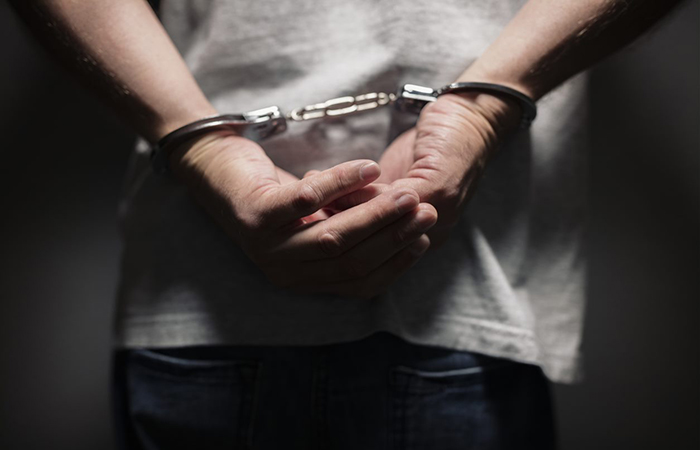
A new VA study finds that Veterans with PTSD—compared to those without—are about 60% more likely to have justice-system involvement. (Photo: ©iStock/BrianAJackson)
August 4, 2020
By Mike Richman
VA Research Communications
Editor's note: This story was updated on Sept. 3, 2020, to correct an error in how a statistic from the study was expressed.
A new VA study finds that Veterans with PTSD—compared to those without—are about 60% more likely than Veterans without PTSD to have justice-system involvement.
The researchers say it is unclear what is driving the association between PTSD and criminal justice involvement. However, the general strain theory, which asserts that the risk of criminal behavior is higher among people who have experienced traumatic events and report negative effects, may partially explain the results of the study, the authors note.
“Congruent with this theory, research indicates a higher likelihood of arrest among Veterans with PTSD who report high levels of anger and-or irritability symptoms, compared to those who do not report these symptoms,” the researchers write. “Screening and early identification of PTSD allow for timely treatment, which may help [reduce] any risk of justice involvement faced by Veterans with PTSD.”
The findings appeared in the Journal of Traumatic Stress in April 2020.
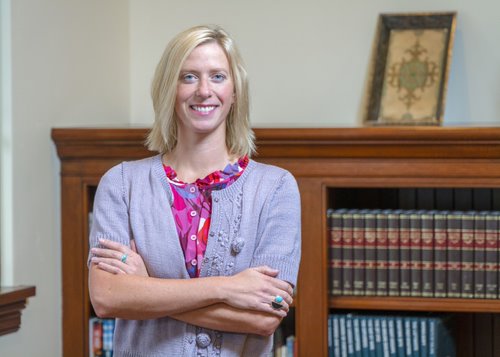
Dr. Andrea Finlay, a VA research health scientist in Palo Alto, has studied trends and characteristics related to justice-involved Veterans. (Photo by Adan Pulido)
Emmeline Taylor, a health sciences specialist in the Center for Innovation to Implementation at the VA Palo Alto Health Care System in California, led the study. She was supported by Dr. Andrea Finlay, a research health scientist at VA Palo Alto. Finlay has carried out studies on trends and characteristics related to justice-involved Veterans—in other words, former service members who have been detained by or are under the supervision of the criminal justice system.
While working in 2018 on a review of the health and health care of justice-involved Veterans, Taylor noticed that a subset of articles focused on PTSD. With an interest at the time in pursuing a graduate degree in trauma psychology, she delved into the link between PTSD and justice-involved Veterans.
"I did a horrible thing. But I'm not a horrible person."
“Trauma is prevalent in the active-duty military, Veteran, and justice-involved populations, yet research has been mixed on a link between PTSD and criminal justice involvement,” says Finlay, who is also a statistical consultant at Stanford University in California and an affiliated researcher at the National Center on Homelessness Among Veterans. “Some studies have found a weak link between criminal justice involvement and PTSD, and others have found a stronger link.
“It’s important to dig into this more,” she adds, “to improve existing theoretical models related to pathways between mental health conditions and criminal justice involvement, as well as VA treatment programs focused on PTSD and criminal justice involvement.”
Posttraumatic stress disorder, commonly known as PTSD, is a mental health condition with well-documented symptoms: flashbacks, nightmares, hypervigilance, aggressive behavior, and severe anxiety, among others.
Understanding PTSD is one of VA’s most pressing challenges. The agency says large percentages of Veterans who fought in Iraq and Afghanistan, the Gulf War, and Vietnam have had that mental health condition sometime in their lives.

VA Researcher Named One of U.S.’ Top Female Scientists
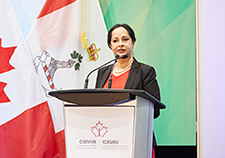
Million Veteran Program director speaks at international forum
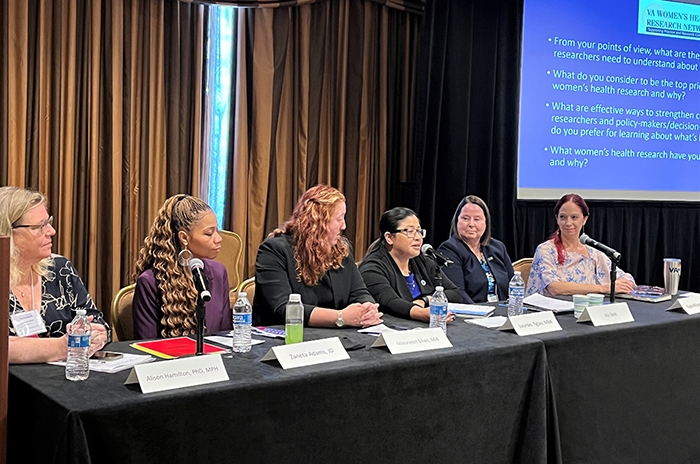
2023 VA Women's Health Research Conference

Self-harm is underrecognized in Gulf War Veterans
Prior studies have linked PTSD with criminal justice involvement, including arrests and incarceration. Plus, Veterans who screen positive for PTSD and military sexual trauma have been shown to be more likely to report legal problems, compared to those who have not. However, the ties between PTSD, combat exposure, and violence are less clear.
Taylor and her colleagues based their findings on a review of 10 research papers in which the main focus was Veteran PTSD and criminal justice involvement, including a current or past arrest, criminal charges, or incarceration. Eight of the studies included U.S. Veteran cohorts, with one each from Britain and Israel. Studies that did not report criminal justice outcomes of Veterans without PTSD were excluded from consideration.
Partly because study results have been mixed on the link between PTSD and criminal justice involvement, the researchers chose meta-analysis to reach a more definitive conclusion. Meta-analysis is a statistical method that can combines data from different studies into a larger dataset for a statistical analysis with greater power than any of the individual studies. “It’s more accurate than just looking at individual studies that find different strengths of the link between PTSD and justice involvement,” Taylor says.
In each of the 10 studies, a Veteran’s PTSD and justice-involved status were measured as a yes or a no. That means the researchers needed to know whether or not a Veteran had PTSD, and whether or not a Veteran was justice-involved. Having both of those yes and no answers allowed the research team to calculate the estimated effect sizes, Taylor explains.
The researchers found that the odds of criminal justice involvement were 61% higher among Veterans with PTSD, compared to Veterans without the mental health condition—a “statistically significant” difference. They also examined the ties between combat exposure and criminal justice involvement but found no significant results.
Nine studies reported the gender of their sample. All of them were mostly or exclusively male. Seven studies indicated the race, with the proportion of white Veterans reaching as high as 82%.
The researchers found four studies that focused on the link between PTSD and violent offenses. But Taylor says that finding is “preliminary at best,” noting that more studies are needed to connect the two with more certainty. Plus, there was no breakdown of the specific crimes the Veterans committed. The National Institute of Justice defines violent offenses as those that involve actual or threatened violence, including physical assault, sexual assault, or armed robbery. Non-violent offenses include crimes such as larceny, theft, or drug charges.
Additionally, Taylor says, the number of Veterans with PTSD who had run-ins with the law could not be quantified.
“In the studies used in our meta-analysis, the percent of Veterans with criminal justice involvement who had PTSD or probable PTSD ranged from 3.8% to 47.9%, and the percent of Veterans with PTSD or probable PTSD who were involved in the criminal justice system ranged from 1.6% to 78.7%,” Taylor says. “Since PTSD and criminal justice involvement were measured differently in the studies, we can’t say for certain the number of Veterans with PTSD and criminal justice involvement.”
The researchers say early screening for PTSD in health care and criminal justice settings, as well as programs such as Veterans treatment courts, may help connect former service members with PTSD to the proper treatments and break the link to criminal justice involvement. Veterans treatment courts serve Veterans who are charged with violent or non-violent offenses. Most of those courts require Vets to be diagnosed with a mental health or substance abuse disorder.
“Understanding the magnitude of the association between PTSD and justice involvement, as well as the strengths and limitations of the underlying evidence, allows clinicians and systems serving Veterans with PTSD and criminal justice involvement to provide more tailored treatments that address the link between these factors,” the researchers write.
Taylor and Finlay are eager to pursue another study on PTSD and justice-involved Veterans. The general strain theory could be used to guide future research on the topic, they note.
“Ideally, a future study would look at a few things to try and get a better understanding about whether or not PTSD or specific symptoms of PTSD lead to criminal justice involvement,” Taylor says. “First, I would want to follow Veterans with PTSD over time, periodically assessing for their PTSD symptoms and any criminal justice involvement. It would also be important to assess the trauma and criminal justice histories of these Veterans prior to military service.
“We also don’t have a great idea about how many legally involved Veterans develop PTSD due to their criminal justice experiences,” she adds. “It could also be interesting to do a study screening for PTSD pre- and post- incarceration to try and determine the prevalence of incarceration-related PTSD.”
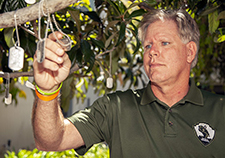
Air Force Veteran Jeff Henson is a volunteer with the Save A Warrior organization. (Photo by Benjamin Jones)
These days, Jeff Henson is doing what he believes has been his calling in life: showing people who have attempted or have had thoughts of suicide that there is another way.
The Air Force Veteran is a volunteer at Save A Warrior. The nonprofit group provides counseling in mental health, wellness, and suicide prevention to Veterans, active-duty military, and first responders. More than 1,100 men and women have gone through the program since it began eight years ago.
Many of these people, Henson explains, are missing “their family, their tribe” with whom they once built a friendship and camaraderie in the military or elsewhere. A lot of them not only have PTSD, he says, but PTSD and moral injury, which is essentially a conflict with one’s personal code of morality. A Veteran may feel guilt, shame, or self-condemnation for violating his or her moral beliefs in combat by killing someone, witnessing death, or failing to prevent the immoral acts of others.
Henson believes moral injury is a form of “complex PTSD” that can also stem from negative circumstances in one’s childhood.
“Thus,” he says, “presenting a Veteran with a tribe of 12 other Veterans who came to Save A Warrior at the same time as total strangers … and who leave as ‘brothers’ with an understanding that it’s not always what happened down-range that has them stuck in life. We provide hope and magic that is the will to live.”
Henson has been there before. Diagnosed with PTSD and having lost hope, he went through the Save A Warrior program in 2016 while in Veterans treatment court in Orange County, California.
His time in court stemmed from an incident in 2013. During an argument with his wife, he brandished a gun in front of her and her two kids (see main story). He was charged with seven felonies, including three counts of assault with a deadly weapon. At the time, he was experiencing many of the classic PTSD symptoms: nightmares, mood swings, anxiety, depression, isolation, and flashbacks. When the incident happened, he says, he had flashed back to a moment when he unintentionally witnessed a decapitation in the Saudi capital, Riyadh, during the Gulf War in October 1990, and he lost control.
After being charged, Henson pled guilty and was convicted. He spent 45 days in a detention center in Orange County. The local Veterans treatment court, a partnership between the VA Long Beach Healthcare System and the Orange County sheriff’s department, allows Veterans like Henson to concurrently serve time and engage in treatment. In court, he learned to meditate and underwent forms of cognitive behavioral therapy, including prolonged exposure (PE). PE is one of the evidence-based psychotherapies that VA offers to help Vets with PTSD overcome troubling experiences. The therapy helps people gradually approach and confront traumatic memories and work through situations they’ve been avoiding.
Before entering Veterans treatment court, how Henson identified himself was “all about looking good and putting on a good front,” he says. “I was about the clothes that I wore, the car that I drove, the job that I had, and the next job that I was going to get. I got things done through people, as opposed to with people.” He had an annual salary from a supply chain company of at least $300,000, he notes.
As he put it, Veterans treatment court gave him a chance to be human and to accept his faults.
“I did a horrible thing,” he says. “But I’m not a horrible person. I did a really bad thing that I’m eternally sorry for, and I can’t change that. All I can do is move forward. I attribute being alive to Veterans treatment court and to the help I was given.”
Today, as part of getting his life back together, the 59-year-old Henson is pursuing a doctorate in depth psychology at the California Institute of Integral Studies. Depth psychology is based on Jungian therapy, a form of talk therapy designed to bring together the conscious and unconscious parts of the mind to help a person feel balanced and whole. He enjoys the academic challenge and hopes to someday pursue the subject professionally.
He also gets a lot of joy from working with the men and women who are enrolled in Save A Warrior (SAW), as well as being a mentor in the Veterans treatment court where he was once a participant. SAW organizes four-day retreats that allow those in the program to bond. Henson attends retreats in Simi Valley, California.
At Save A Warrior, he and other shepherds use a non-medical model to encourage enrollees to share their concerns, fears, and vulnerabilities. The shepherds often hear things that people wouldn’t ordinarily share in a medical setting, he says, including the fact that it can be risky for a policeman or fireman to reveal that they have PTSD. Doing so, he’s learned, can get them fired from their job.
“They may also say, `I have an alcohol problem. I have a drug problem. I beat my wife,’” Henson says. “Or in the case of a paramedic, they may say they’re struggling at home because they’ve got a three-year-old and weren’t able to save a four-year-old who looks a lot like their child at home. I witnessed a Veteran tell me and his brothers [in SAW] for the first time that he’s gay. That’s courage. That’s being vulnerable. It’s about a tight seal on the container we call SAW, where men and women may feel safe for the first time in a long, long time.”
Henson just wants to give back to the organization that gave him so much.
“Save A Warrior did not save my life, but it gave me hope,” he says. “It’s the difference between `being alive’ and `living’. It’s also about being of service. I’m one of the shepherds who helps people through the process that I went through. In my view, this is not a gift I’m giving where I expect something in return. If I expect something in return, it becomes transactional.
“When we’re kids, we’re told by our parents not to use four-letter words,” he adds. “I dispute that because hope is a four-letter word, and hope is powerful.”
--- Mike Richman
VA Research Currents archives || Sign up for VA Research updates